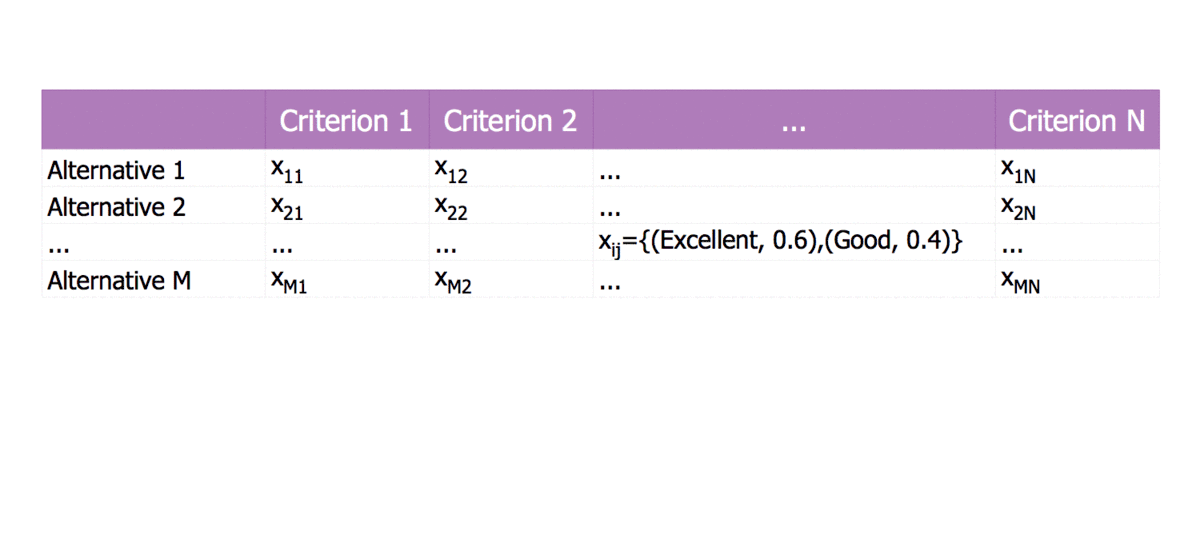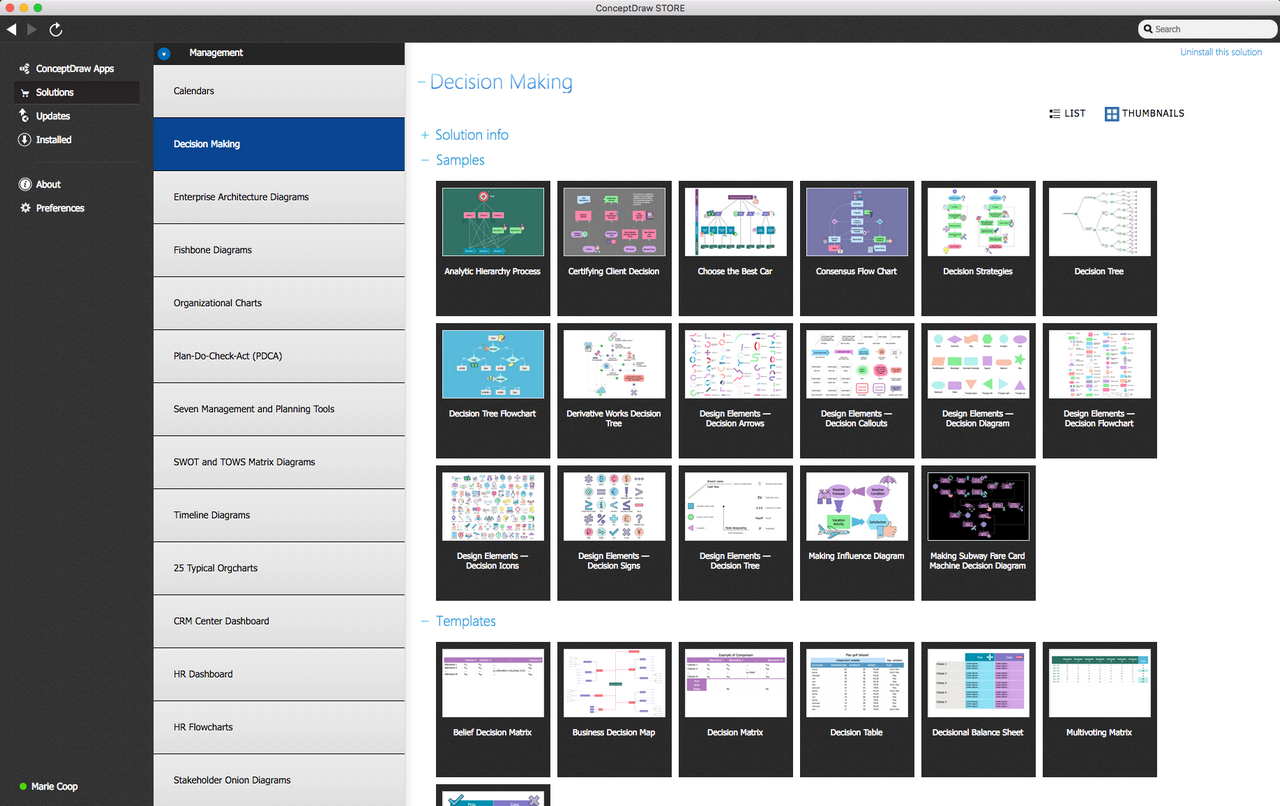Decision Matrix
A so-called decision matrix can be described as a list of values in columns and rows. It allows an analysis of systematically identifying, analyzing and rating the performance of relationships between information and sets of values. All the elements of any decision matrix show the decisions that are based on some particular decision criteria. The matrix may be very useful for looking at many decision factors as well as for assessing each of such factors’ relative significance.
Decision matrix is usually used for describing an MCDA problem. MCDA is an abbreviation for multi-criteria decision analysis. M describes alternative options and each of the needs in order to be assessed on N criteria. It can all be described by the already mentioned decision matrix. Decision matrix has M columns and N rows. It may be also represented as M × N elements. Each of such elements (for example, a Xij one) is either a single grade, representing the performance of an alternative i on j, or a single numerical value.
An example may be in case an alternative i is "car i". When the criterion j is "engine quality" assessed by five grades {Poor, Below Average, Below Average, Good, Exceptional} and "Car i" is assessed to be "Good" on "engine quality", then Xij = "Good". The mentioned assessments may be replaced by scores. Usually, the scores are from 1 to 5. Sums of all scores may be compared and ranked after in order to show the winning proposal.
A belief decision matrix is known to be similar to a decision matrix. It is used for describing a multiple criteria decision analysis problem in the so-called Evidential Reasoning Approach. Each of the elements in a belief decision matrix is known to be a belief distribution.
A so-called conventional decision matrix is known to be a special case of belief decision matrix. It may happen only in case one belief degree in a belief structure is 1, while the others are 0.
This decision-matrix method may be also known as a so-called “Pugh Concept Selection” or a “Pugh method”. Being invented by Stuart Pugh, it is known as a popular qualitative technique, widely used for ranking the multi-dimensional options of an option set. It is widely used in engineering for making the needed design decisions. Also, it is popular for ranking the investment options, product options, vendor options or any other multidimensional entities.

Example 1. Decision Matrix
Any basic decision matrix may consist of establishing the criteria options. Such criteria options can be scored and then summed in order to gain a total score. The total score then can then be ranked. It should not be weighted in order to allow any quick selection process.
The so-called weighted decision matrix is known for operating in the very same way as the basic decision one. The only difference is that it introduces the concept of weighting the criteria in a special order – the order of importance. The resultant scores may reflect the importance to the decision-maker of those particular criteria which may be involved. How high the weighting should be given depends on how important the criteria are. Each potential option is scored and multiplied in a way of weighting. The weighting may be given to the criteria for producing the needed result.
There are obviously many advantages of creating a decision-making matrix. The main one may be a fact that all the subjective opinions about one particular alternative versus another one can be made more objective comparing to other representations. Another advantage is that the so-called sensitivity studies can be performed.
Knowing more about the nuances of decision matrix, you can try making the one of your own. Creating the needed drawing from scratch may be a challenge. Having the modern and sophisticated tools can help in this situation. Thus, the CS Odessa team of IT, as well as the design specialists, have created the needed tools in order to be used for such purposes. Representing your data with the help of some of the completed applications might be much simpler than making the needed drawings on your own by using some other tools.

Example 2. Decision Matrix Solution
Having the ConceptDraw DIAGRAM diagramming and vector drawing software, for example, can lead to making the great looking smart and professional drawings within only a few minutes. Having the ConceptDraw STORE as an additional tool for working in the ConceptDraw DIAGRAM more successfully is always beneficial. Making the best out of the given tools can lead to a unique as well as professionally well result.
Using the Decision Making solution as an extension to the ConceptDraw DIAGRAM diagramming and drawing software may help any of its users to create the good-looking representation of the data in a way of a decision matrix. Either being a decision-maker or the one who only creates the needed drawings, you must find the Decision Making solution a useful tool for completing the tasks of illustrating the needed matrices within a short period of time.
Having the pre-made vector stencils as well as the previously created examples of many drawings, including the decision matrices from the Decision Making solution may help with making the unique representation for any of the ConceptDraw DIAGRAM user. In case you doubt in being able to make the needed decision matrix professionally, then you can always use any of the already existing templates as drafts for your own drawings.